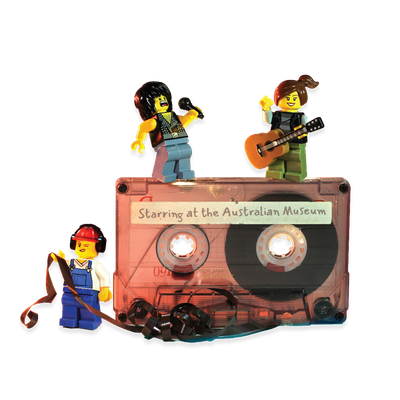Your search returned 2817 results
By Page Type
By Tag
- fish (966)
- blog (696)
- fishes of sydney harbour (401)
- First Nations (299)
- Blog (236)
- AMRI (169)
- archives (164)
- Eureka Prizes (146)
- Aboriginal and Torres Strait Islander (135)
- insect (126)
- Ichthyology (124)
- geoscience (109)
- minerals (102)
- climate change (100)
- podcast (94)
- Fish (91)
- Anthropology (89)
- International collections (80)
- Minerals Gallery (78)
- wildlife of sydney (78)
- Labridae (77)
- frog (74)
- gemstone (70)
- photography (66)
- history (64)
- Mollusca (60)
- gem (59)
- staff (59)
- Birds (56)
- Gems (56)
- Indonesia (56)
- education (56)
- shark (55)
- AMplify (54)
- people (53)
- earth sciences (50)
- exhibition (50)
- past exhibitions (50)
- Gobiidae (48)
- sustainability (46)
- Pomacentridae (45)
- Serranidae (44)
- lifelong learning (42)
- science (42)
- Earth and Environmental Science (41)
- Syngnathidae (41)
- Ancient Egypt (40)
- Bali (40)
- bird (40)
- dangerous australians (40)
-
Blueface Angelfish, Pomacanthus xanthometopon (Bleeker, 1853)
https://australian.museum/learn/animals/fishes/blueface-angelfish-pomacanthus-xanthometopon/Blueface Angelfish, Pomacanthus xanthometopon (Bleeker, 1853)
-
Hawaiian Triggerfish, Rhinecanthus aculeatus (Linnaeus, 1758)
https://australian.museum/learn/animals/fishes/hawaiian-triggerfish-rhinecanthus-aculeatus/Hawaiian Triggerfish, Rhinecanthus aculeatus (Linnaeus, 1758)
-
Painted Grinner, Trachinocephalus trachinus (Temminck & Schlegel, 1846)
https://australian.museum/learn/animals/fishes/painted-grinner-trachinocephalus-myops/Painted Grinner, Trachinocephalus trachinus (Temminck & Schlegel, 1846)
-
Blacktip Bullseye, Pempheris affinis McCulloch, 1911
https://australian.museum/learn/animals/fishes/blacktip-bullseye-pempheris-affinis/Blacktip Bullseye, Pempheris affinis McCulloch, 1911
-
Blacktail Grubfish, Parapercis queenslandica Imamura & Yoshino, 2007
https://australian.museum/learn/animals/fishes/blacktail-grubfish-parapercis-queenslandica/Blacktail Grubfish, Parapercis queenslandica Imamura & Yoshino, 2007
-
Longsnout Stingerfish, Inimicus didactylus (Pallas, 1769)
https://australian.museum/learn/animals/fishes/longsnout-stingerfish-inimicus-didactylus/Longsnout Stingerfish, Inimicus didactylus (Pallas, 1769)
-
Blacksaddle Goatfish, Parupeneus spilurus (Bleeker, 1854)
https://australian.museum/learn/animals/fishes/blacksaddle-goatfish-parupeneus-spilurus/Blacksaddle Goatfish, Parupeneus spilurus (Bleeker, 1854)
-
Spotted Sweetlips, Plectorhinchus chaetodonoides Lacépède, 1801
https://australian.museum/learn/animals/fishes/spotted-sweetlips-plectorhinchus-chaetodonoides/Spotted Sweetlips, Plectorhinchus chaetodonoides Lacépède, 1801
-
Yellow-throated Scrubwren
https://australian.museum/learn/animals/birds/yellow-throated-scrubwren/The Yellow-throated Scrubwren has been called the Blacknest-bird, for its habit of using black roots to build its domed nest.
-
Discover more
2025 Australian Geographic Nature Photographer of the Year
Special exhibition
Free entry
Now open -
Discover more
Unfinished Business
Special exhibition
Free entry
Now open -
Discover more
Wansolmoana
Permanent exhibition
Free entry
Open daily -
Find out more
Burra
Permanent kids learning space
Free entry
10am - 4.30pm![]()
-
Discover more
Minerals
Permanent exhibition
Free entry
Open daily![]()




